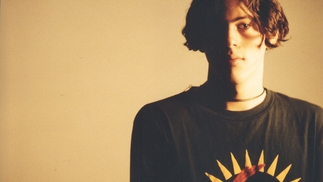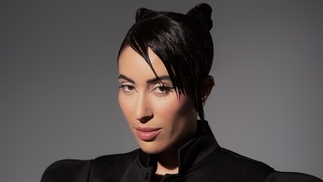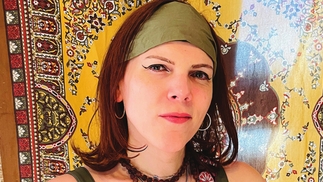These are dance music's most influential female pioneers
The contribution of women throughout the history of electronic music has been huge, but too often undocumented...
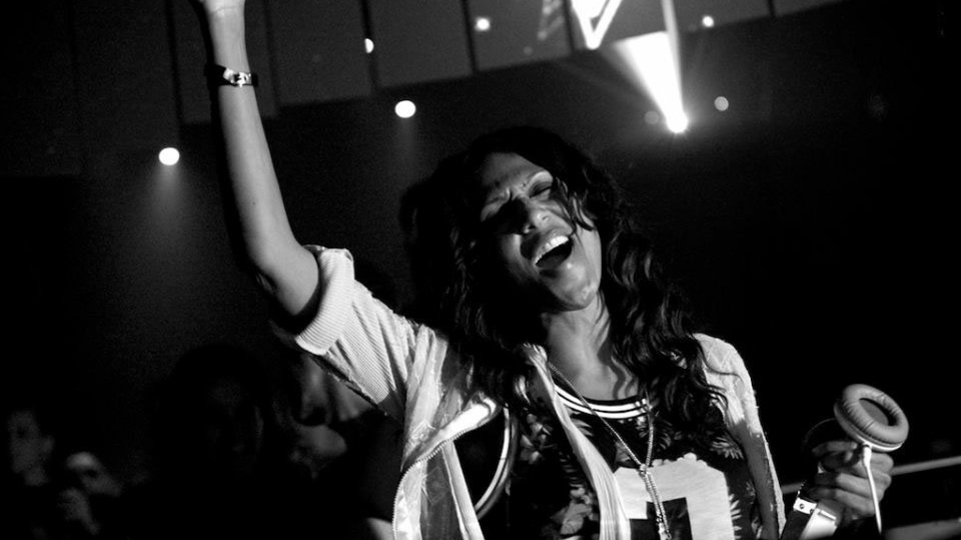
By now the history of electronic music and its journey into clubs, concert venues, stadiums and homes worldwide is a well-established narrative. It’s a story that typically includes the same names along the way: Giorgio Moroder here, Patrick Cowley there; Vangelis on the one hand, Derrick May on the other.
Cities such as San Francisco, Berlin, Düsseldorf, Detroit, Manchester and Sheffield. Too often, though, it excludes the most pioneering figures. The women who have been instrumental to the evolution of every stage of dance music, practically every genre, are often sidelined or left in the shadows — though thankfully this appears to be changing as more female DJs, bands, artists and producers emerge and encourage a truer understanding of history and their forebears.
That arguably the most innovative artists of all in electronic sound are women and that their story is seldom told (with some exceptions) says a lot about the sexism that exists in an area of culture that is supposed to be, for the most part, open-minded, liberal and equal...
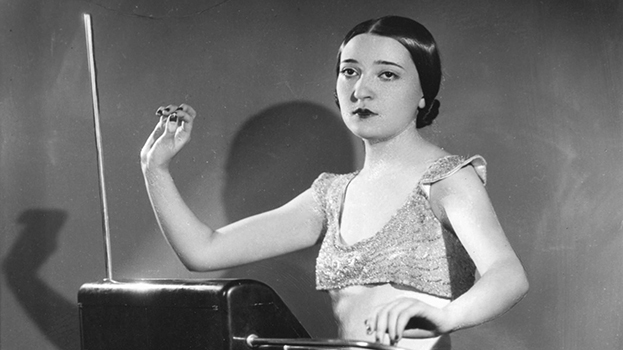
BEGINNINGS/AMBIENT/NEW AGE/SOUND ART
Some of the earliest electronic music masters were women at a time when very few people were aware that such a thing existed. Clara Rockmore, a Lithuanian classical musician, was the first to achieve widespread acclaim as a player of the theremin, a weird electronic instrument (much later used by acts including Portishead) that made spooky sounds and was featured on several early science fiction and horror movie scores. She toured in the USA during the 1930s to packed-out concert halls, manipulating the strange antennas of the instrument to the fascination of the crowds.
Much better known was Delia Derbyshire, a member of the BBC Radiophonic Workshop group of musicians who composed early electronica for BBC radio and TV programmes from the 1960s onwards. At a time when electronic music was very much a niche concern, mostly the reserve of neo-classical composers and academia, Derbyshire and her fellows were using hugely complicated, archaic machines and proto synths to make bleeps and tape FX, with a view to evoking mood and atmosphere.
Delia is best recognised for the theme to Doctor Who, a tune that still sounds terrifyingly otherworldly now, but dig deeper into her work and it’s astonishingly prescient — and unsettling. Tunes like ‘Pot Au Feu’, with its Detroit-style riffs (remember, this was 1968) or ‘Sea’, with its spoken word samples and ominous drones, are creepier than ice dropped down the spine. She was also a member of a band, The White Noise, who mixed vocals and songs with the electronics way before many others even thought of the idea.
Daphne Oram is another member of that collective who left the BBC to pursue her more futuristic musical endeavours. As early as 1957 she was experimenting with sine wave oscillators and composing soundtracks.
She developed the 'Oramics' drawn sound technique and even created an early software version of it for the 1980s Acorn Archimedes computer. She received little acclaim in her lifetime (she died in 2003) but is just now starting to have her music reappraised: electro artist, DJ and label owner Andrea Parker released a remix collection in 2011, while Walls made a whole album using elements from Oram’s tape archive in 2014.
An artist that pushed the boundaries of sound far earlier than most is Pauline Oliveros. Though she only released her first album in 1982, in the 1960s Oliveros was a member of the San Francisco Tape Music Center, a research facility dedicated to electronic sounds. While there she also obtained a black belt in karate, but it’s her music that’s the most badass. Pioneering the concepts of Deep Listening and Sonic Awareness, using an altered accordion put through electronic effects, she created meditative drones that are as hypnotic and trippy as they come, and still does today. Check out ‘Accordion & Voice’.
Laurie Spiegel pushed drone into a new zone. Designing the MusicMouse multi-platform software sequencer in the ’80s, she worked with early synths from the end of the ’60s, and her 1980 album ‘The Expanding Universe’ is a masterpiece of ambient/new age/drone.
Annette Peacock too was way ahead of the curve but is starting to get more attention now. Her late '60s and early '70s recordings solo and with Paul Bley encompass acid rock, free jazz and raw, loose funk, all wrapped up in futuristic Moog synthesizer oscillations and treated vocals. Dig ‘I’m The One’ — far out stuff.

Any discussion of early electronics pre-dance music would be incomplete without mentioning Laurie Anderson. More famous than most of the other musicians mentioned thus far, Anderson remains very active.
From an audio-visual arts background, electronic music was an early passion, but she crossed over into pop territory with the resolutely un-commercial, frosty repetition of the classic ‘O Superman’, a chart hit in 1981, subsequently remixed and reinterpreted by M.A.N.D.Y & Booka Shade and Audiofly among others, providing a proto-techno blueprint for others to mimic.
INDUSTRIAL/BALEARIC/HOUSE/TECHNO
At the dawn of the ’80s, as disco and funk began to be synthesised and subsumed into early electronic dance music — genres like Italo, boogie, industrial, new wave and EBM — Christine Newby was a key architect in its development towards house. Under the pseudonym Cosey Fanni Tutti, she was part of Throbbing Gristle, Genesis P. Orridge’s iconoclastic industrial outfit.
Not a dance band at all, they nonetheless minted proto-house tracks such as ‘Hot On The Heels Of Love’, a big influence on Detroit producers including Carl Craig (who remixed it), while as part of CTI or Chris and Cosey, she made the wonderfully prophetic ‘Dancing Ghosts’, a cosmic 303 bass-led thing that sounds like early acid.
As the 1980s progressed, several women became powerful tastemakers in the dance scene. Previously part of the Blitz Kids scene that revolved around the infamous New Romantic Blitz club, which attracted everyone from Marc Almond to David Bowie, Princess Julia made her name as a resident DJ at London’s Kinky Gerlinky night, a gay club that attracted all of club-land’s coolest and most outré characters. A music writer and editor for i-D and QX, she’s collaborated with lots of electro acts and remains very active in music.
Though Danny Rampling, Nicky Holloway, Paul Oakenfold and co are the DJs often attributed with bringing the Balearic sound of Ibiza back to the UK and kick-starting the eclectic grab-bag nature of the early house scene here, Nancy Noise is another important part of the puzzle. She first encountered Ibiza club culture in 1986 while living on the White Isle during the summer. Bitten by the bug, Nancy practically lived at Amnesia during that season, where Alfredo and Leo Mas would spin the diverse sounds delineated as Balearic then — that still captivates imaginations now.
“I used to get into Amnesia when it was empty and I’d be in there all night, and then people would come much later, the workers from other places like Pacha, it would go from very few people to packed,” Nancy says. “I’d watch the whole night, but I didn’t think about it like that — I was dancing and hanging out. But seeing that, it goes in somewhere.”
Becoming friends with Paul Oakenfold, she returned the next summer and began to collect many of the tunes she would hear the Amnesia residents play. When Paul fortuitously visited Nancy at her flat in London one day, they set in motion what was to become her DJ career.
“All my records were lined up along the wall and he could see all the covers with the pictures on them,” Nancy recalls. “He said, ‘Whose are these records?’ And I said ‘Oh they’re mine, it’s all the stuff I loved from Amnesia’. That was it really. We were all hanging out and because we were all so into what had happened in Ibiza, we put on a party.”
That party was Future, one of the first London acid house clubs, where Oakenfold was resident and Nancy would play a more eclectic Balearic sound in the second room.
“I’d never been on decks but I played really eclectic in the beginning,” Nancy says. “Amnesia stuff, a bit of hip-hop, David Bowie, The Clash, The Cure. At Future I used to play Todd Terry, his early stuff wasn’t that fast, like ‘Dreams Of Santa Anna’ [as Orange Lemon], quite slow house. Obviously I really got into house and played house sets at the Ministry and places like that. I had two different sounds really. I still carried on doing the Balearic stuff but I did do a lot of the house clubs as well.”
When Nancy started there weren’t that many women DJs; she mentions Vicky Edwards, Princess Julia and Rachel Auburn. She feels that gender was never made an issue for her at the time and she didn’t encounter negativity as a woman DJ — that, in fact, the opposite was true. “Because I was into music I always would go to record shops and stuff, hang out with guys into music. It obviously was more guys in a record store but I never found it an issue with anyone that I worked for or anything.”
She’s currently inspired by the new Balearic sounds put out by a host of labels around the world, and in the last few years has been DJing all over again.
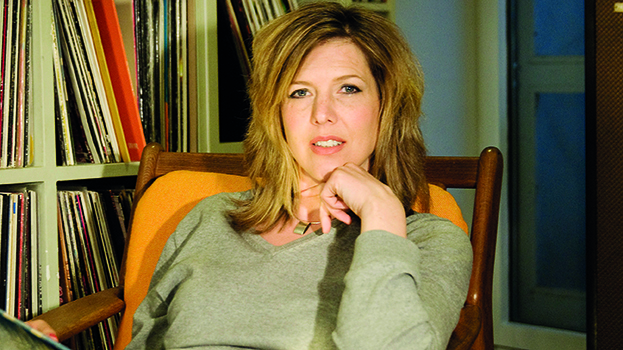
DJ Cosmo, aka Colleen Murphy, is from just outside Boston, USA but has lived in London for many years. Though she started out as a radio DJ in high school, it was when she moved to New York that she fell in love with disco, house and techno. Going to David Mancuso’s Loft parties in 1991, she was exposed to a different kind of soulful, trippy dance.
Whereas she’d come from an indie background and already liked EBM and industrial, she warmed to the vibe, atmosphere and sound of these events. “Going to the Loft for the first time, I was transformed heavily. I was blown away by the whole experience but also musically as well,” she says. “David [Mancuso] was playing dance music that to me could move beyond the dancefloor, it wasn’t just functional. It was very deep and very psychedelic some of it as well, especially on that soundsystem. That’s really what hooked me in.”
Working at a record store called Dance Tracks in the East Village sealed the deal, organising records for her friends John Hall and Joe Claussell in return for payment in vinyl. She became a house and disco DJ herself, played the Loft regularly with her good friend Mancuso and subsequently played dance on the radio (on WNYU), as well as in clubs worldwide.
In New York there weren’t that many women DJs she was aware of at the time — though she mentions Sharon White and Susan Morabito as being of particular note — and although generally having a very positive experience among male colleagues, she did encounter some negativity on account of her gender.
“It was quite funny because I was mixing live [on the radio], talking, running my board as well, doing all the announcing,” she says. “Once I answered the phone and the guy said, ‘Tell the DJ he’s doing a great job!’ I said, ‘Actually, I’m the DJ!’ He was like, ‘Woah, sorry!’ That was the funny thing, people couldn’t see who it was and would just assume.”
Nowadays, Colleen is very busy running her Classic Album Sundays events around the world, and puts on Lucky Cloud, a party she set up with David Mancuso, four times a year, as well as DJing all over. She sees the significant increase in women artists today as positive, though reckons there’s still improvements to be made.
“I think it’s fantastic. It’s totally changed. I don’t think it’s as much of an issue. But there still are issues, in the sense of, you look at a festival line-up and how many female DJs will you see? It’s not just DJs either, it’s also with bands.
“My policy has always been just lock down, do what you do and be the best you can be, and try not to get too distracted by that stuff.”
In Holland in the ’90s, DJ/producer Miss Djax (Saskia Slegers) blazed a trail for tougher-than-tough techno, from Detroit vibes to raw acid. Her labels Djax and Djax-Up Beats were notorious for their banging — but still funky — releases, featuring everyone from Steve Poindexter and Mike Dunn to DJ Skull and Acid Junkies.
“I never felt any different because since I was a young kid I knew that I wanted to become a DJ. So for me it feels natural,” says Saskia, whose new album ‘Flight 303’ just dropped. “I was raised that there are no differences between genders and that, if you want to, you can do the same jobs and things that males do.”

Meanwhile on the house tip, Smokin' Jo in the UK was one of the most popular DJs on the circuit. Starting out as a resident at the legendary Trade at Turnmills in London, she made her name playing all over, from Space Ibiza to Fabric. Her music has remained staunchly house and underground throughout her career. She’s still a keeper of the flame now and recently released productions on Dutch tech-house label Area Remote.
Through the 2000s there’s been an explosion in the number of women artists in house and techno. Magda, Heidi and Miss Kittin have led the way, while Nina Kraviz, Steffi, Tama Sumo, Virginia, Bella Sarris, Aurora Halal, Xosar and The Black Madonna are just a few of the artists keeping the underground ticking now.
ELECTRONICA
Parallel to the club-focused women pioneers of house and techno emerged a new wave of electronic acts whose sound was built for home listening. Drawing on the ambient movement, ‘Artificial Intelligence’ compilations on Warp and beats without a 4/4 pulse — as well as more abrasive forms of noise and sound art — the leaders of a new incarnation of electronic music were also looking back to the women who had helped bring the genre into being in the first place.
South African-born but UK-based artist Mira Calix, or Chantal Passamonte, has been one of the most forward-thinking artists working in England in the last 20 years. Recording for Warp, her 1999 debut album ‘One On One’ is full of bizarre, brilliant flights of fancy, like the Arabesque clank and crunch of ‘Sparrow’, while later pieces have seen her venture into neo-classical territory, collaborating with the London Sinfonietta and creating sound installations on commission for art galleries and theatres. Passamonte says her music is directly inspired by the first women of electronica.
“For me, it was very much Laurie Anderson when I was growing up — she’s such a polymath and great experimentalist working across so many genres, including electronic music,” Chantal claims. “She’s still innovating and exploring and I very much hold her in high regard. Laurie Spiegel is another, although like Oliveros, Oram, Derbyshire and Eliane Radigue, I discovered most of them much later, in no small part due to the issues surrounding the inadequacies of documentation of female artists’ work in general, rather than its calibre. All are outstanding artists and innovators in their own right.”
Currently making installations for an exhibition in Nanjing, China, she sees today’s exposure of women artists in electronic music as having a positive trajectory — “Mostly due to the visibility of women onstage/online/in media and on the airwaves.
I think this will serve as great inspiration to a future generation of artists as well as both men and women on the dancefloor today,” she says. “It no longer seems like a tiny minority. When you look at campaigns like the Visibility project (femalepressure.tumblr.com) and the many many women archive (manymanywomen.wordpress.com), it’s much easier to discover and explore both existing artists and those key figures from the past that you may have missed.
It’s also great to see the mainstream media paying more discourse to women artists, which I think will have a positive effect in the long term. The more women we see creating music, past and present, the more girls will grow up to feel that this is a possibility.”
Pioneering another aspect of electronica, Leila Arab is a producer who was arguably one of the first to recognise the potent combination of machine sounds and R&B that is so prevalent now. The Iranian Londoner collaborated with singers Donna Paul and Luca Santucci on her albums ‘Like Weather’ for Rephlex and ‘Courtesy Of Choice’ for XL, before joining the Warp crew.
Her last EP was released in 2012 but she’s recently been producing for rapper Zebra Katz. France’s Colleen, meanwhile, became known for her lush loops and treated samples on her early 2000s work for Leaf, before gravitating to live instrumentation, and recently released another superb record, 2015’s ‘Captain Of None’ on Thrill Jockey.
POST EVERYTHING
Nowadays there are many women working successfully as electronic artists, most notably those who aren’t bound by genres. Though genres and micro-scenes persist, our instant gratification age has created musicians who make a mixture of all kinds of sounds. Peaches rose from the electroclash scene, like Miss Kittin, but has since veered into fucked-up synth-pop and rock, playfully questioning notions of gender boundaries — or lack of them — along the way.
Grimes is rapidly becoming a superstar, having risen from a far artier DIY oeuvre. Mixing cool — and far less cool — influences, drawing from trance to hip-hop, she’s a totem of the post-internet polymorphous music culture.
Mica Levi, or Micachu, burst onto the scene in the late 2000s mixing art-pop and grime in revolutionary fashion, collaborating with lots of post-millennial future leftfield stars on the ‘Filthy Friends’ mixtape and on a series of albums with her band The Shapes. But her most recent soundtrack of movie ‘Under The Skin’ was truly astonishing — a deeply unsettling piece of otherworldly, eerie electronics perfectly suited to the subject matter. Her musical path is unique.
From the leftfield underground in dance, Laurel Halo is producing her own fractured, futuristic updates on house and techno, while Ikonika is way out on her own, mixing boogie funk with video game soundtracks and bass music to exhilarating effect.
In Sweden, Karin Dreijer Andersson of The Knife (with Olof Dreijer) and Fever Ray has made weird but accessible electro-pop, though her most recent album (and supposedly The Knife’s last), ‘Shaking The Habitual’, far expanded her vision into auteur territory — a dark, aggressive and political record.
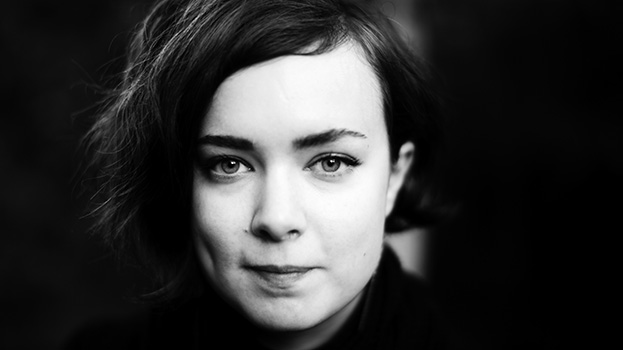
Half Swedish, and inspired by The Knife, is Klara Lewis, perhaps one of the most exciting and original artists working now. Her 2014 album ‘Ett’ for Editions Mego appears to be a vividly realised compendium of crackling effects, off-world sonics and ultra-modern electronics, but Klara’s music is entirely sourced from found sounds.
“It’s a way of narrowing things down, only using found sounds and stuff. But I try to always listen actively and always bring my portable recorder with me,” she explains. “It could be nature sounds, or everyday sounds at home — basically anything. I treat them very heavily, sometimes I can’t remember what the sound was in the beginning.”
When she performs live, it’s to a backdrop of her own visuals, a suitably abstract set of arresting shapes, lines and visual effects, and indeed that’s where she started — in audio-visual art. But Klara — whose work is often visceral and uncompromising in its sound — never wants her art to be just a backdrop, but always to provoke a reaction.
“That’s what I find most interesting, trying to make people feel something and it doesn’t matter if they feel, ‘Oh I hate this’ or get a nice feeling, I want there to be something engaging. Ambient stuff can be really nice and also more theoretical music, but I really don’t like it when music can feel like it’s not even made for people to connect with, like it’s above people... difficult to understand. I find that kind of thing boring and annoying.”
Klara earmarks trailblazers such as Inga Copeland and Mica Levi as worthy of praise, but it’s the original women who led the way that remain a great source of inspiration. Though sexism of course persists in music as a whole and the playing field is skewed in favour of male artists, the presence of a huge number of new women artists in the scene — and listeners looking backward to the music of the original women pioneers — shows a sign that things are gradually moving in the right direction.
“Delia Derbyshire and Daphne Oram are definitely a big influence,” Klara signs off. “I guess because of the scene being very male dominated, it’s always inspiring and empowering when you hear things that women have done, especially such a long time ago. I think it’s easy to feel, ‘I can do this too’. They did this a long time ago, they were brave enough to step out of the socially accepted narrow thinking and just do their thing. That’s really inspiring.”
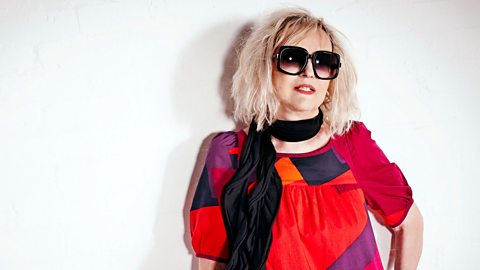
AT THE FOREFRONT
Women pioneers who changed the landscape of music
Annie Nightingale
A broadcaster on BBC Radio 1 from 1970 onwards, Nightingale made her name playing rock music on a succession of radio shows on that station, before introducing punk and new wave bands on TV show The Old Grey Whistle Test at the close of the ’70s.
But in the ’90s she embraced underground dance music and became one of its greatest champions on the radio, playing techno, drum & bass and big beat on The Chill Out Zone show, and subsequently DJing in clubs around the world. She became a champion of breakbeat, has released three mix compilations to date (her most recent for Ministry’s 'Masterpiece' series) and is recognised as a pioneering DJ of all music, not just electronica.
Kemistry & Storm
Until Kemistry’s tragic death in a road accident in 1999, this duo were acknowledged as one of the greatest tag-teams in drum & bass. Co-running the Metalheadz label with Goldie, they were some of the most prominent women DJs on the d&b scene at the time, somewhat of a rare breed — apart from people like DJ Rap. Kemi & Storm also mixed a stellar entry in the ‘DJ Kicks’ series and proved an influential presence as club DJs. Storm continues to play out to this day, flying the flag for underground d&b.
